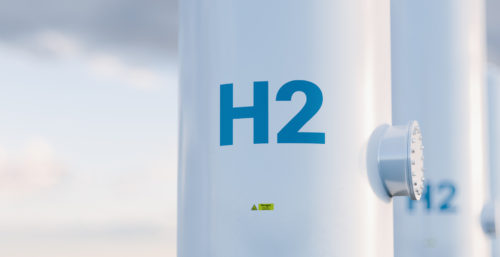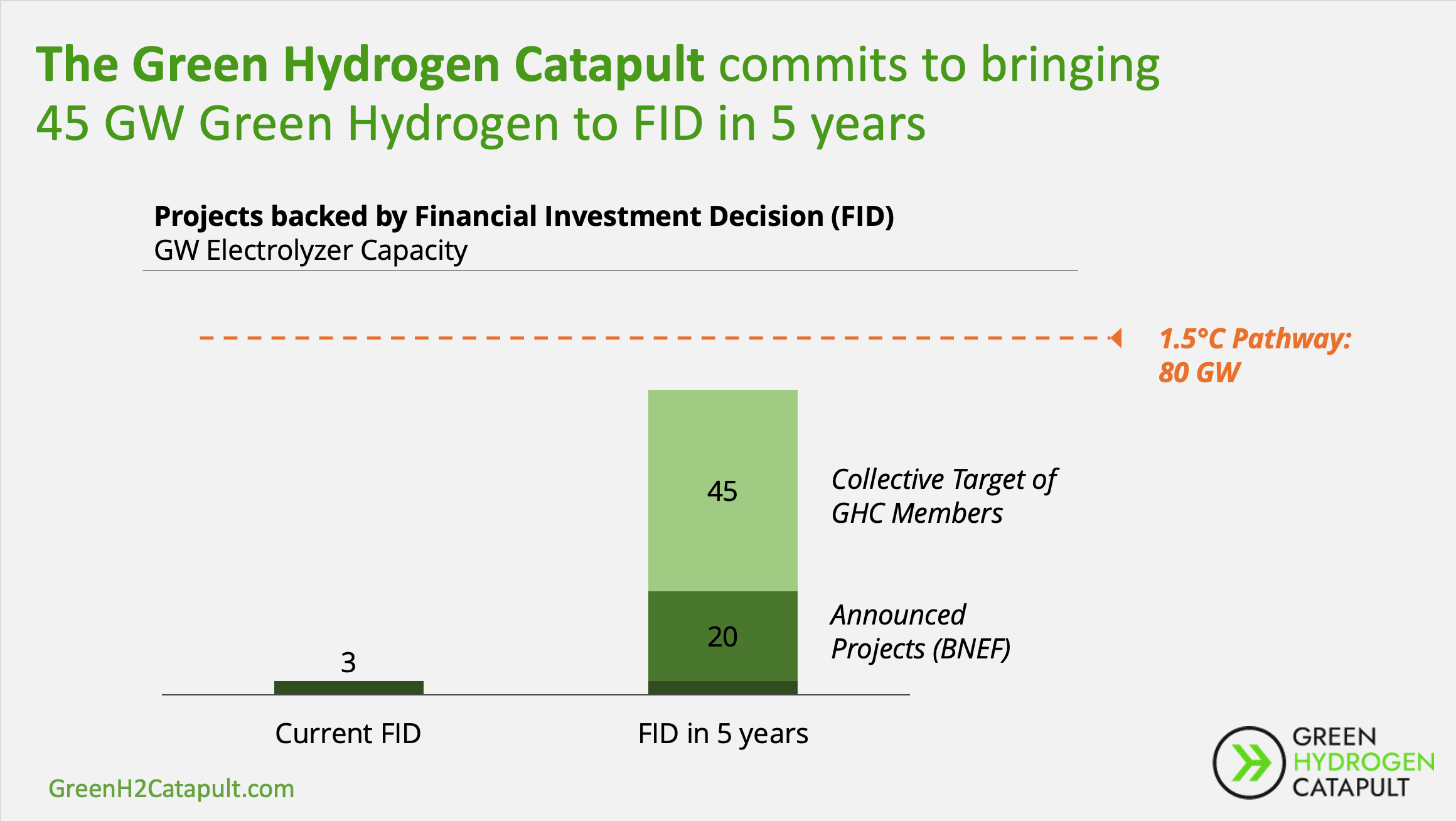
COP26 Made Clear That the World Is Ready for Green Hydrogen
After the recent COP26 climate conference in Glasgow, COP26 President Alok Sharma said that “we have kept 1.5°C within reach, but its pulse is weak.” The progress of green hydrogen is one of the developments keeping that pulse alive.
Green hydrogen is an innovation that is essential for decarbonization of need-to-abate sectors like steelmaking, shipping, and aviation. And at COP26, all sides of the system—from governments to hydrogen producers to industrial consumers—clearly signaled that the world is ready for it.
Supply Is Not the Bottleneck
Most spectacularly, the production side of the green hydrogen value chain made clear at COP26 that supply won’t be the bottleneck this decade. The Green Hydrogen Catapult, a private-sector coalition convened with the support of the UN High-Level Climate Action Champions and hosted by RMI, announced a joint commitment to develop 45 GW of electrolyzer capacity by 2027. (Electrolyzers produce hydrogen and oxygen from water using electricity, which is sourced from renewables to generate “green” hydrogen.)
Combined with what’s already deployed, and the announced projects in the pipeline as tracked by BloombergNEF, this commitment places us close to the green hydrogen production capacity needed for a 1.5°C pathway as outlined in the International Energy Agency Net Zero by 2050 roadmap. Furthermore, this development will also help drive green hydrogen costs below $2 per kilogram, making it competitive with blue and in some cases gray hydrogen, both of which are produced from fossil fuels. (Blue hydrogen is distinguished from gray hydrogen by the use of carbon capture and storage to reduce the greenhouse emissions from hydrogen production.)
“Green hydrogen is the practical, implementable solution that will decarbonize heavy industry and create jobs globally now.” —Fortescue Future Industries CEO Julie Shuttleworth addressing the World Leaders Summit at COP26
Demand Is Emerging
On its own, mere supply of green hydrogen cannot put the world on a 1.5˚C-aligned pathway, but fortunately end-use sectors have also sent demand signals that they need green hydrogen for decarbonization. Just ahead of COP26, a group of companies represented in the Cargo Owners for Zero Emission Vessels (coZEV) committed to only purchase ocean freight services powered by scalable zero-carbon fuels from 2040 onward. During COP26, the US delegation launched the First Movers Coalition, mobilizing demand sectors to set green hydrogen targets.
“We already see demand for our green steel product grow faster than we can build out our commercial production assets.” —Henrik Henriksson, CEO of H2 Green Steel
Furthermore, the World Business Council for Sustainable Development and the Sustainable Markets Initiative announced supply, demand, and support pledges, including from finance, infrastructure, and certification organizations. More concretely, as laid out by Gonzalo Saenz de Miera, director of climate change of Iberdrola, the demand is already there for the next decade, considering that the existing hydrogen market (currently for gray hydrogen) is forecast to exceed 200 million metric tons by 2028.
Governments Are Setting Targets and Implementing Policy
The Green Hydrogen Policy Dashboard, which launched at COP26, shows that governments are starting to set ambitious targets, implement policy, and supply funding for green hydrogen. European countries are leading the way for now. However, countries such as Mauretania, Morocco, Namibia, and Chile have exceptionally high-quality resources for renewable power generation and are increasingly expressing interest in green hydrogen.
Securing the Promise of Recent Developments
These are very promising developments. But more is needed to fast-track the transition and ensure that the momentum out of COP26 leads to a resilient market of sufficient scale.
The green hydrogen sector is asking governments to:
- Support and incentivize adoption of green hydrogen in priority industry sectors
- Develop clear and accelerated approval pathways and legislation for green hydrogen projects, including required power grid upgrades and interconnections
- Set ambitious near-term targets
- Create a fair market environment by aligning support for green hydrogen with existing subsidies
Meanwhile, the Green Hydrogen Catapult will continue building out green hydrogen production capacity; mobilizing value chain projects in priority sectors like shipping, fertilizer, and steelmaking; and supporting and leading the establishment of policy to enable a green hydrogen economy, including voluntary mechanisms such as emissions certifications. As COP26 showed, the world is ready for this critical decarbonization solution, and we don’t have a moment to lose in putting it to use.
